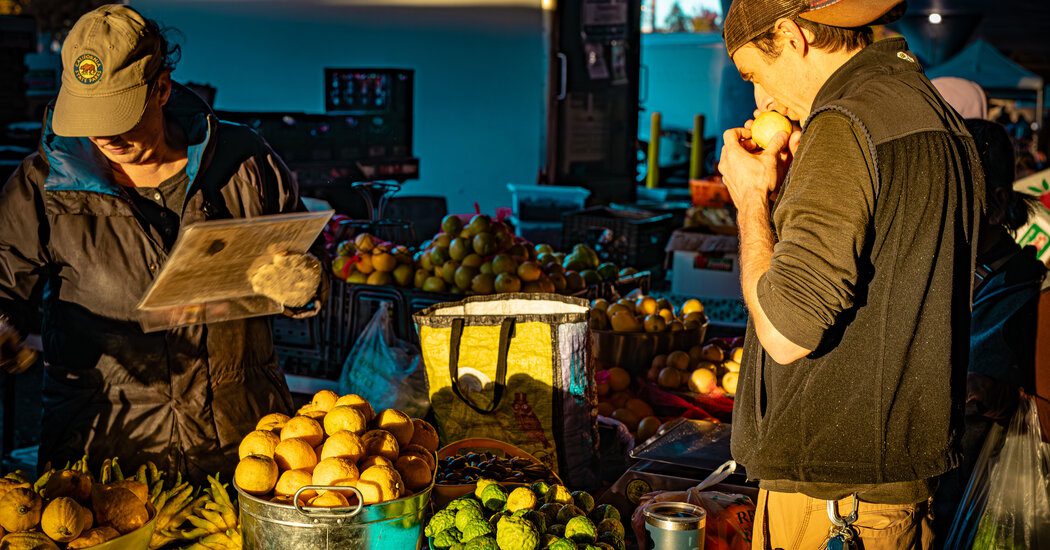On a recent evening in a dimly lit Japanese restaurant, nearly a dozen diners watched rapt from across the bar as a chef blowtorched a sliver of sturgeon until it was kissed with char. He topped the nigiri with crisped fish skin and a spoonful of caviar.
The quiet veneration from the customers, the practiced flick of the chef’s wrist and the buttery, bouncy pieces of fish might have suggested the meal was unfolding on a side street of Ginza.
The restaurant wasn’t in Tokyo, though. It wasn’t even in New York City or San Francisco — it was in a residential neighborhood of Sacramento, at a restaurant called Kru.
But the real surprise wasn’t the skill with which the sushi chef carved the tender fish, or how he draped it delicately over a quenelle of grains. It was its origin story. The sushi rice had come from Rue & Forsman Ranch, less than 40 miles away, and the sturgeon from even closer.
“Growing up in Sacramento, I had a chip on my shoulder,” said Billy Ngo, the owner and chef of Kru. “After high school, all my friends wanted to get the hell out; I stayed behind and worked, like, ‘No, Sacramento is cool — or it’s going to be cool.’ And it’s been really great to be part of that change.”
For years, Sacramento had the makings of a great restaurant town. It consistently ranks among the three most ethnically diverse cities in America — with all the variety of cuisines that brings — and it sits near the middle of California’s Central Valley, with its 12-month growing season of vast agricultural wealth.
The region’s decades-long farm-to-fork cooking movement has produced a handful of culinary stalwarts. But it took a cadre of young chefs returning or relocating to Sacramento, and a flock of new residents fleeing from punishing Bay Area housing prices, to fully flip the switch.
In the past several years, Moonbelly and Faria, two bakeries whose flaky croissants and elegant loaves rival those at Du Pain et des Idées in Paris, have opened, with rotating offerings of buckwheat coffee cake, roasted bok choy-milk bread buns and focaccia sandwiches stuffed with beet and feta sold under the moniker “girl dinner.”
At least three pizzerias with distinct pie styles — Pizza Supreme Being, Pizzasaurus Rex and Majka — have been attracting lines and selling out creations like a kimchi- and potato-topped sourdough pie and a Pizza Supreme Birria.
The ramen joints Kodaiko and Binchoyaki, which also serves izakaya fare, supplement the epic…
Click Here to Read the Full Original Article at NYT > Travel…
